I using the ggtext package for formatting the axis labels of a plot made by ggplot2, specifically the function element_textbox_simple(), and I have some issues with the html format to introduce white spaces or a blank space between words.
In the above plot, each axis label have two levels:
- Name of the variables (e.g. niceness)
- A second line with a tag which describe each extreme value of the respective axis (e.g. jerk - nice)
For achieve this "multi-level label" I used ggtext to format the label with the following html expression:
<br><span style = 'font-size:8pt'>Niceness</br><br><span style='word-spacing:20pt;font-size:10pt;color:red'>JERK NICE</span></br>"
My problem is that the attribute word-spacing don't work and I need to space the "second line with tags" of each axis to the extremes of the axis. For example, in the plot I want to replace the text between JERK and NICE with many empty spaces. I tried to use nbsp; which supposed that encode a white space but without success, it only separate the two tags by one default space. Any idea?
You can reproduce the plot with:
library(ggplot2)
library(ggtext)
library(latex2exp)
# Multivariate normal dist parameters:
mu <- c(50, 50)
Sigma <- matrix(c(200, 4, 8, 200), 2)
# Generate 10.000 data points
set.seed(323)
df <- as.data.frame(MASS::mvrnorm(5e3, mu, Sigma))
# Compute correlation between V1 and V2
cor0 <- round(cor(df$V1, df$V2), 2)
# Initial plot
p0 <- df %>%
ggplot() +
geom_point(aes(V1, V2), alpha = .3, size = .2) +
scale_x_continuous(breaks = seq(0, 100, 20), n.breaks = seq(0, 100, 5)) +
scale_y_continuous(breaks = seq(0, 100, 20)) +
coord_cartesian(xlim = c(0, 100), ylim = c(0, 100)) +
labs(x = "<br><span style = 'font-size:8pt'>Niceness</br><br><span style='word-spacing:5pt;font-size:10pt;color:red'>JERK (replace this text by a blank separation between these two extrem label descriptions) NICE</span></br>",
y = "<br><span style = 'font-size:8pt'>Attractiveness</br><br><span style = 'font-size:10pt;color:red'>NOT (replace this text by a blank separation between these two extrem label descriptions) HOT</span></br>",
title = TeX(paste("$\\rho$ =", as.character(cor0)))) +
theme_bw(base_size = 8) +
theme(plot.title = element_text(hjust = 0.5),
panel.grid.major = element_blank(),
panel.grid.minor = element_blank(),
axis.title.x = element_textbox_simple(
margin = margin(0, 100, 15, 100),
halign = 0.5
),
axis.title.y = element_textbox_simple(
margin = margin(0, 0, 0, 0),
orientation = "left-rotated",
halign = 0.5
))


